North to the Future (Part 2)
I’ve been living in Anchorage for over a month now! (Estimated reading time: 9 mins)
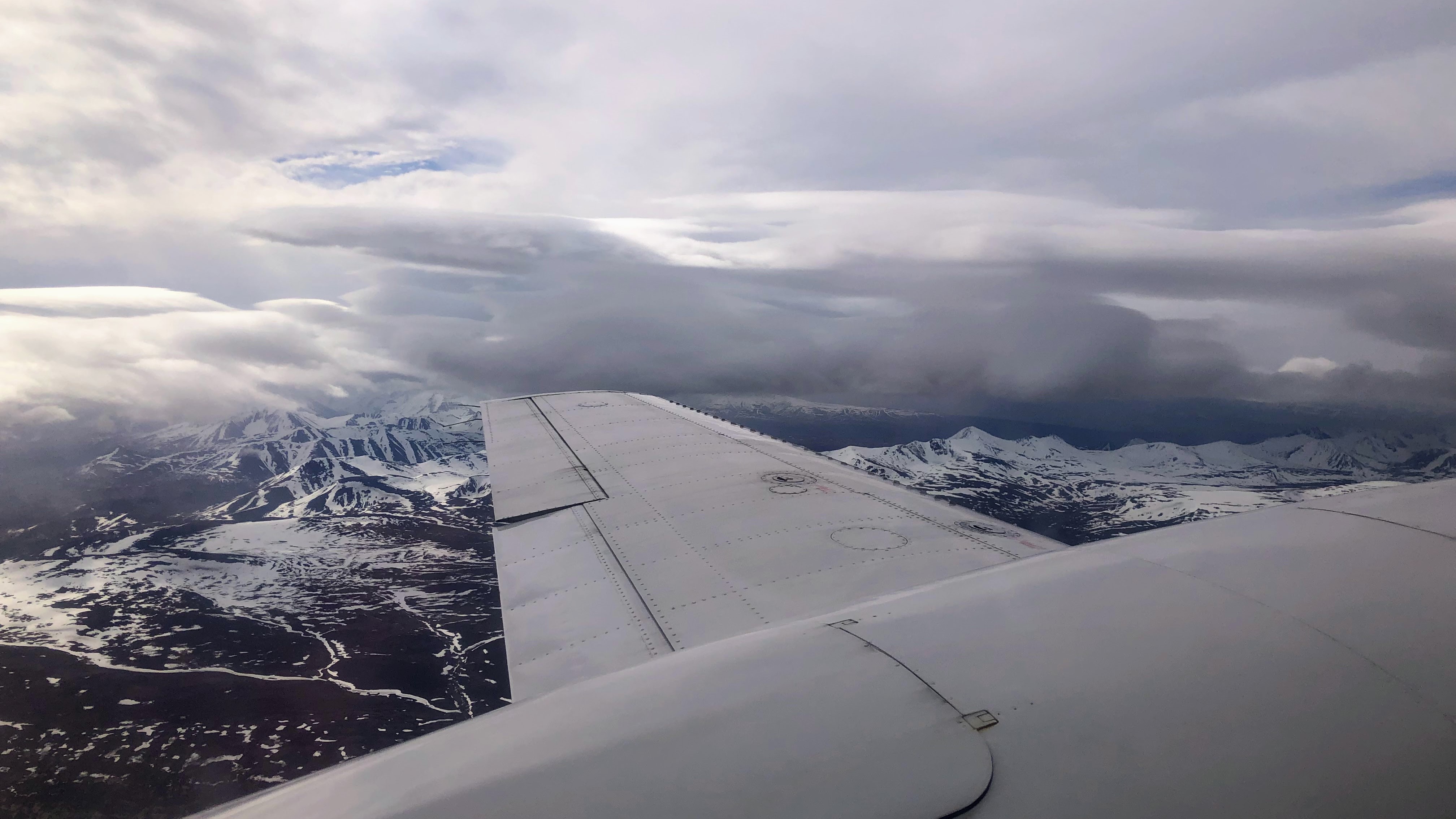
I’ve been living in Anchorage for over a month now! Brace yourself: I wax poetic about the Alaskan landscape quite a bit in this one.
Most days are chilly, overcast, and drizzly, but summer has nonetheless arrived. Everything is green – the sides of roads bloom yellow with cheerful (and invasive) dandelions, and trees on my walk to work burst with frothy white petals that land in my hair or make faux snowdrifts along the curb. On a road-trip, John and I pulled over on the side of Seward Highway to pick white and purple wildflowers. Allegedly, this is America’s most beautiful highway, and I believe it: sheer cliffs, trickling waterfalls, white-frosted mountains and a glasslike bay, seagulls spinning, mudflats like something from a fantasy novel. In the evening sun (low in the sky but ever persistent), the distant mountains are awash with purple.
I spent a weekend in Homer, which is a touristy fishing town at the bottom of the Kenai Peninsula. The drive down from Anchorage was one of my favorite parts of the trip. The sky was flat white, the sunlight diffused so that it seemed like no shadows fell across the mountains at all. In the lingering whispers of winter, the mountains were alive with texture and color – orange, brown, maroon, green, lilac, gray – and the snowy peaks almost perfectly matched the color of the sky, so that it was difficult to tell where Earth started and stopped. Driving through the valleys made me feel small in the most beautiful way.
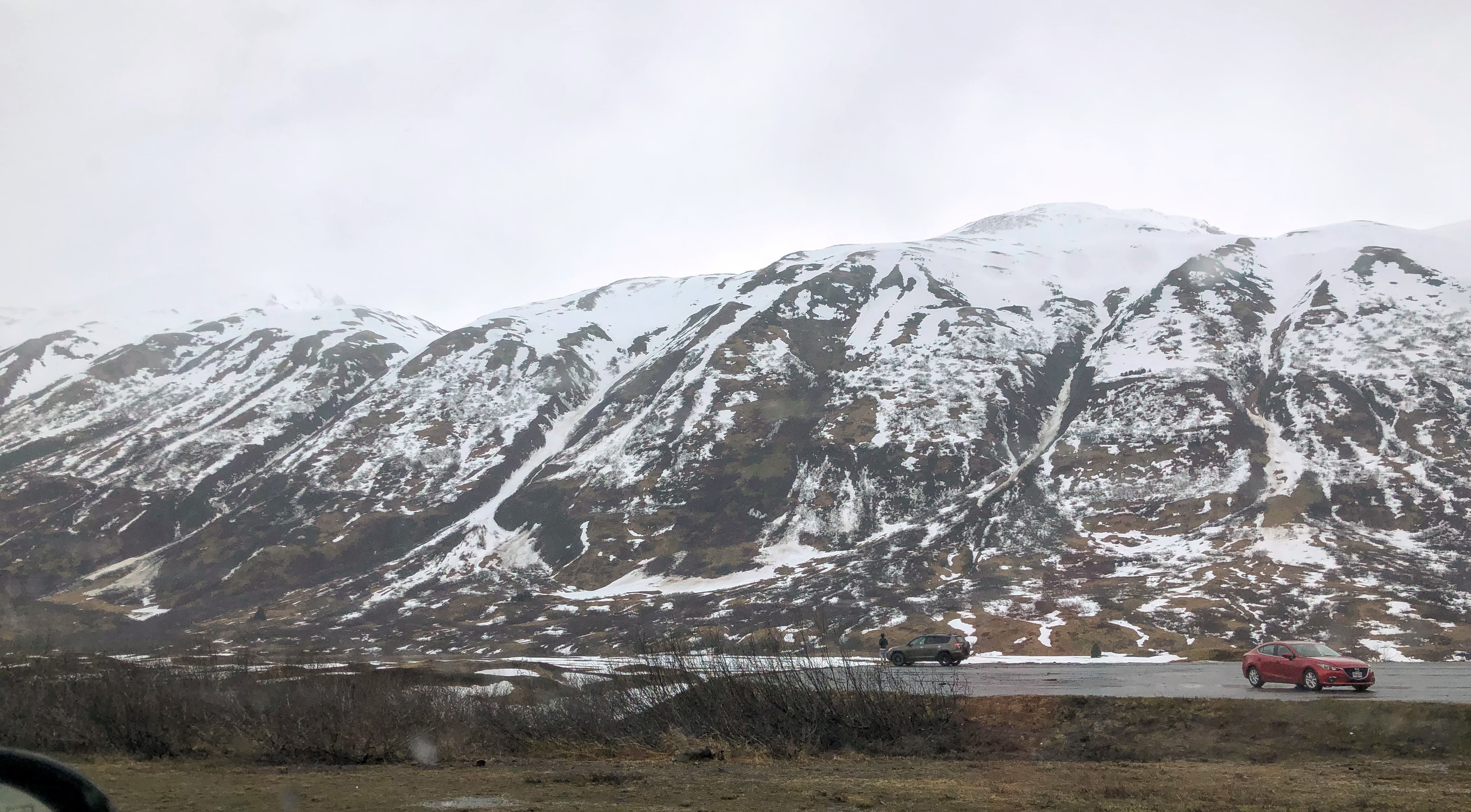
In Homer, John and I explored the 4.5-mile Homer Spit, a narrow finger of land jutting from the peninsula. It was cold and rainy, so we jumped from shop to shop and then ventured to the harbor or beach when we were brave enough to weather the wind. Later, we found a rocky beach flocked with bald eagles – I had never seen a wild bald eagle before, but here were dozens of them, sitting bizarrely on the edge of the surf among the seagulls, waiting for fish scraps to wash ashore. Red kelp and great black slabs of coal littered the beach. Big-bearded fisherman dressed in Sou’wester hats and flapping raincoats marched back and forth, throwing flayed halibut carcasses into the waves.
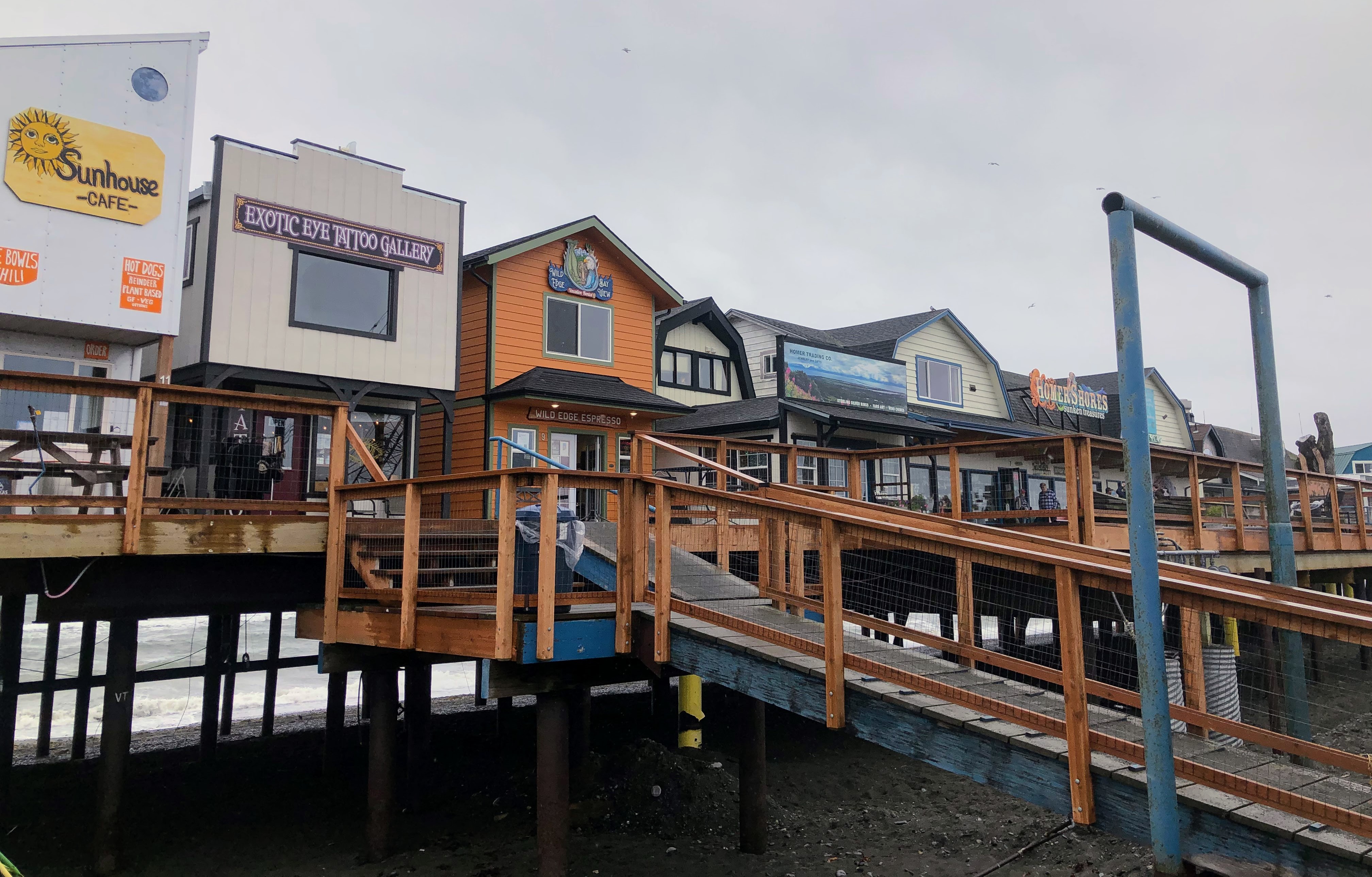
On another weekend, we camped near Cooper Landing on the Kenai Peninsula, where a few years ago a massive forest fire destroyed over 100,000 acres of forest. Now, rolling mountain after mountain is gray and porcupined with dead trees. The first stages of regrowth have begun, and the ground is carpeted with red moss; mushrooms peek from the undergrowth, and pitted moose prints contain taigas in microcosm. Climbing over fallen trees and poking at strange flowers, I felt like an explorer on a distant planet. My favorite part was when a bird burst from a fallen bouquet of pinecones, and when we knelt closer, we found a tiny, perfect nest hidden inside, cupping three tiny, perfect eggs.
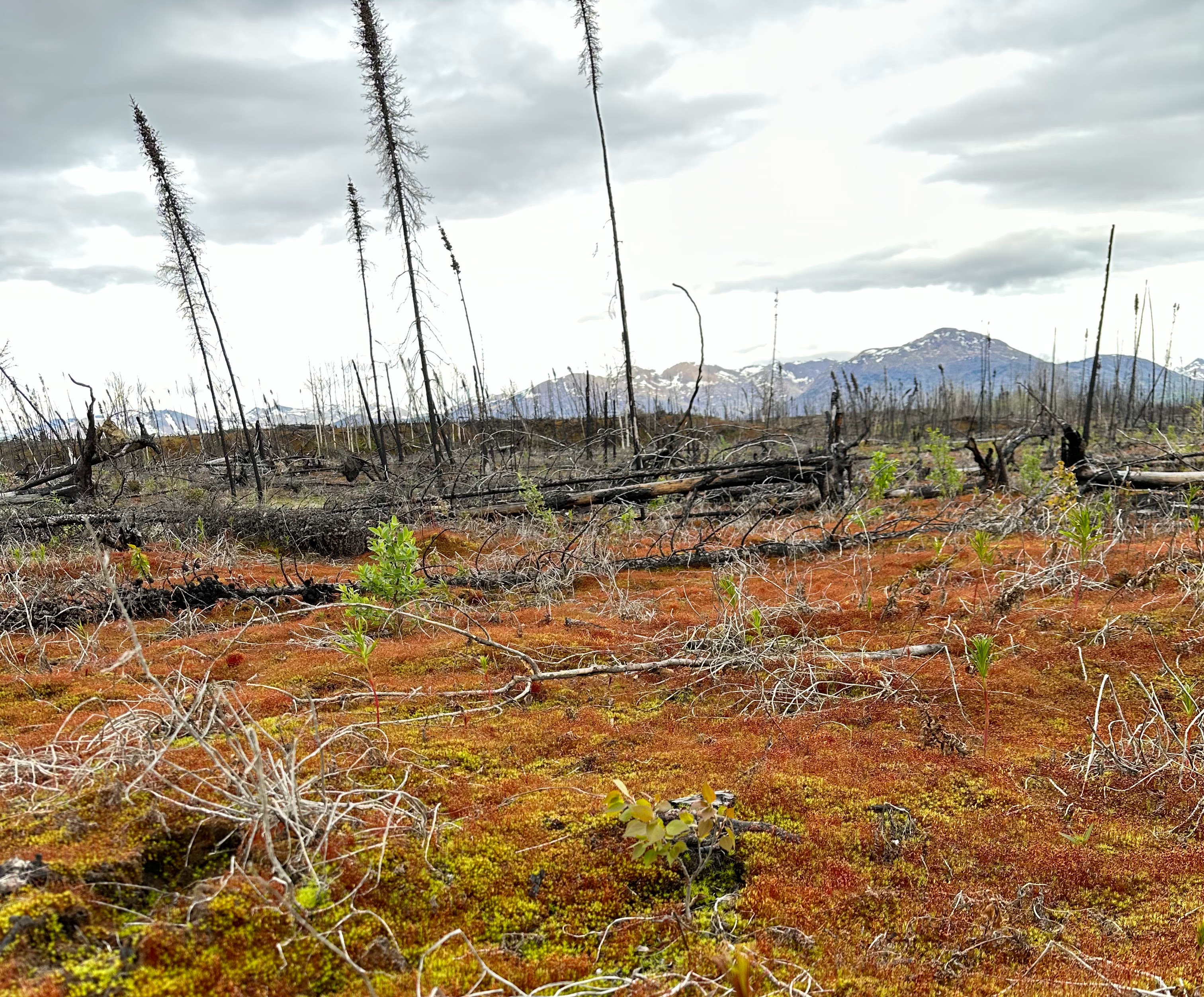
On June 5, I went on my first work trip with ANTHC. The original plan was to accompany a construction manager to Chignik Bay (located in the Aleutian Islands), where we would spend the night and then return to Anchorage the next day. One of the construction guys chartered a bush plane, a twin-engined (make note of the number of engines) Piper PA-31 Navajo with two toy-like propellors and a playful blunted nose. It had eight seats including the pilot. The pilot seated us to best distribute weight, and I was put in the back row in front of the cargo hold, where luggage strained against a net. If I craned my neck, I could see the cockpit with its alien array of switches and gauges.
In flight, the propellors blurred and disappeared, and the engine was the only sound that existed on the other side of my neon orange earplugs (I’ve worn more earplugs during the last month than all my life previous – metal concerts, plane rides, heat fusion machines, an apartment with unbearably thin walls next to neighbors with marital issues). Bush planes fly much lower and slower than commercial jetliners, which makes them wonderful for sight-seeing, and also wonderful for getting beat the fuck up by turbulence. More than a few times, I had to grab my seat as we were jerked around.
I was awed by the sheer quantity of raw wilderness that existed outside of Anchorage – back in Florida, it feels like pockets of wilderness exist inside civilization. Out here, it’s the inverse. Without buildings, it was impossible to tell the scale of things – the width of a lake or the height of a mountain. Everything dissolved into texture. We flew over mountain ranges, swamps of jewel-colored lakes, and shining ribbon rivers.
The plane was supposed to drop us in Chignik Bay on its way to False Pass, where another project was taking place, but the weather in Chignik Bay was too volatile to land, so we flew on to Nelson Lagoon (gray, empty, allegedly haunted by a strange fox that chases people into their homes) for refuel and then continued down to False Pass. This is a frequent occurrence in rural travel – plans can change in a moment based on weather. Most of my co-workers have stories about being trapped in remote villages for days or even weeks, and I’ve been warned to always bring a sleeping bag and extra clothes on work trips. The plane landed in False Pass, and I joined the team visiting for a pre-final site inspection.
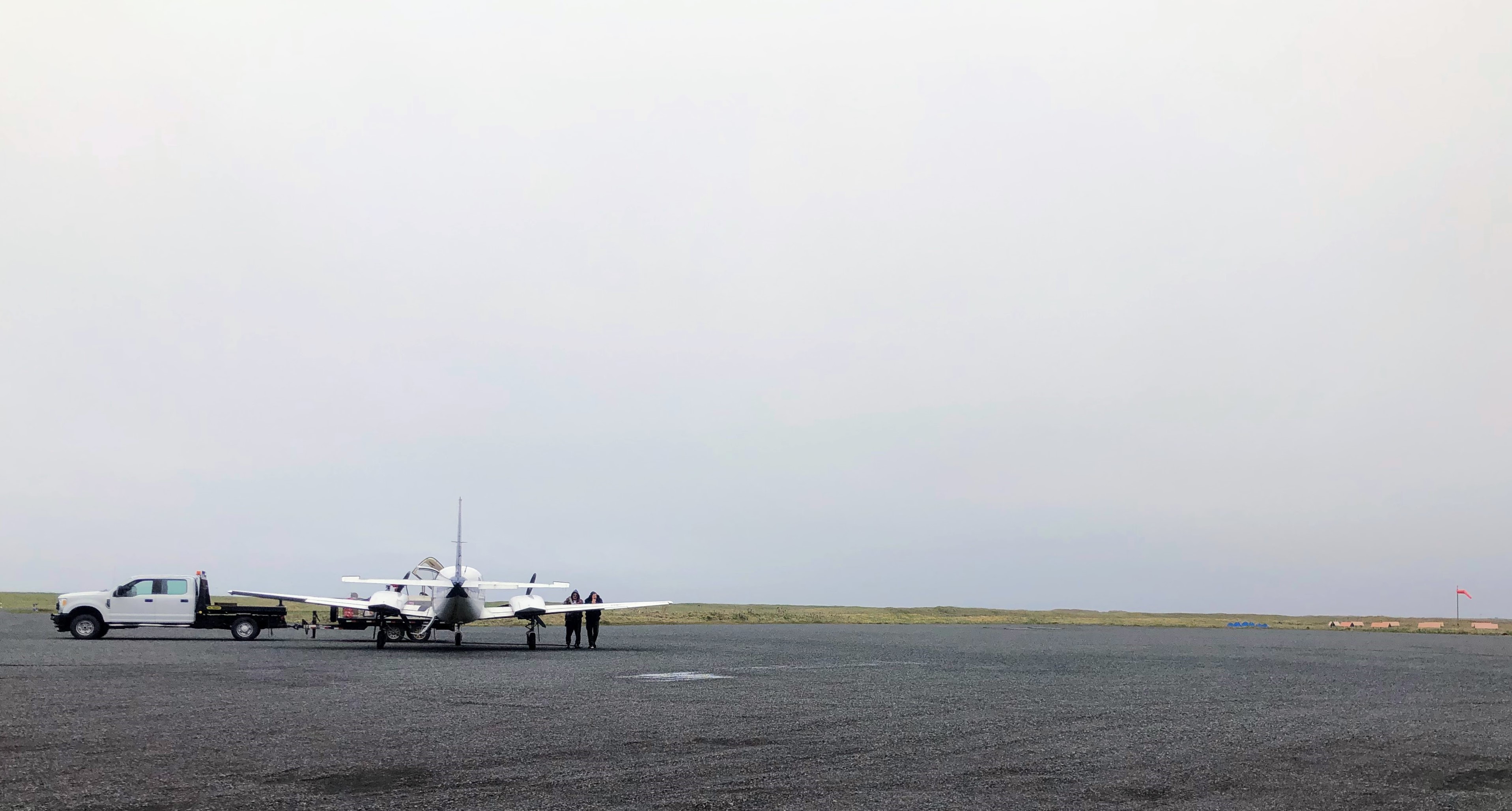
As in most of southern Alaska, the weather in False Pass was cold and drizzly. I was struck by how remote it was – dirt roads crisscrossed with ATV wheel tracks connected a couple dozen homes. On one side of us, ghostly mountains ringed the horizon. On the other, the bay was gloomy and unwelcoming. A cannery slouched in the distance – in the summer, the population of False Pass blooms by a couple hundred as foreign workers come to work at the cannery. There was a post office, school, and city hall. A few “village dogs” (made notable by their persistent friendliness and aversion to baths) followed us as we drove from house to house in the superintendent’s beat up red truck. The superintendent had been at False Pass for the past month overseeing the construction project, and he was ready to leave. Before our plane propellors had even stopped spinning, he’d been reversing his truck full of luggage down the runway.
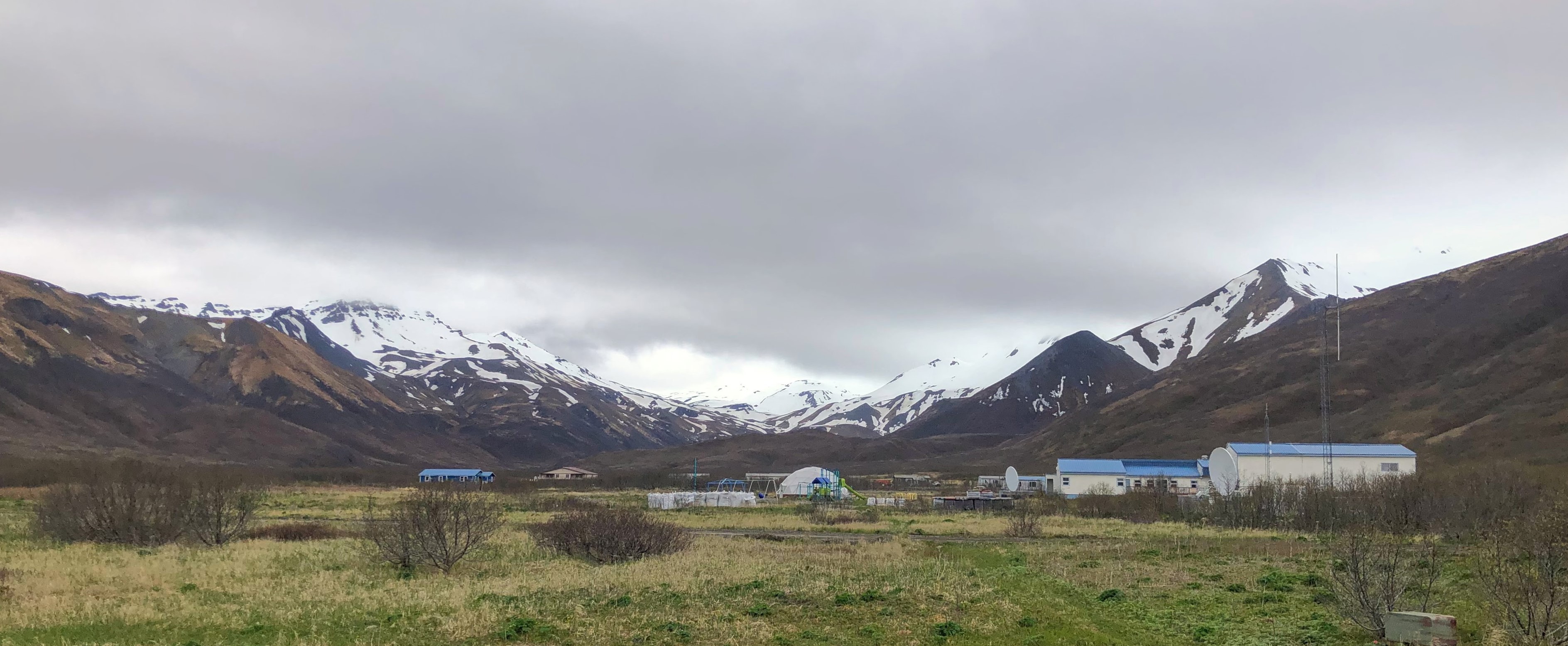
The project involved installing septic systems at each of the homes. I’ve been learning a lot about wastewater treatment – I won’t bore you with the details, but it was fun to identify in-person all the components I’d seen rendered on 2D plan sets. I’ve also learned a lot about constructing plumbing systems in cold climates. One of the obvious obstacles is that regular pipes freeze in extreme temperatures, and so everywhere they use arctic piping (pipes wrapping in thick insulation) and heat traces (electrically heated wire) to keep plumbing warm. The other primary problem is that much of Alaska is covered in permafrost, meaning that the ground is permanently frozen. Not only does this mean that pipes can’t be buried, but building structures, (especially heated ones) on the permafrost can cause the ground to melt, leading to unstable foundations. Another problem is frost heaves; water in the soil freezes and defrosts with the changing seasons, causing the ground to move. Many pipes have to be built with flexible connections in order to prevent breaking during heaves.
We left False Pass (they were selling False Pass merch in the city hall – who it could be for, I am not sure, but I’m kicking myself for not buying a sweatshirt), narrowly escaping before the rain rolled in and had us grounded. We returned to Nelson Lagoon for fuel and then made for Anchorage.
I was tired, and the sheet of clouds and engine roar lulled me in and out of sleep. So, I was only partially conscious of the fact that, about thirty minutes after leaving Nelson Lagoon, our plane lost its right engine.
Later, I was informed that fuel and coolant began to stream from the wing while our pilot scrambled to keep the plane upright, and also scrambled to hide the fact that he was freaking the fuck out. We dropped from 3000 feet to a mere 500. Below: open water and scattered uninhabited beaches. The pilot veered the plane low over the beach, preparing to make an emergency landing. Luckily, we made it back to Nelson Lagoon. With the wind and mismatched engines, we nearly came in sideways. Another plane heard our mayday and was waiting at the airstrip.
Half of my ignorance is accounted for by the fact that I’d been sleeping, the other half by the fact that this was my first time on a bush plane and I’d assumed all strange sounds were normal. Needless to say, I was not helpful when the safety department interviewed me about the incident a week later. I turned down their offer to provide counseling.
Even several weeks later, the construction guys in my department love to joke about my first plane ride. Most of them are lighthearted, but I’ve had a few conversations that made me realize that perhaps the situation was more serious than I’d initially thought – after all, most bush planes only come with one engine. If we’d been on a different plane, the quality engineer said to me, let’s just say we would have gotten wet. In his two decades of rural travel, he had never experienced engine failure. I can’t decide if that’s a comfort or a concern.
Anyhow, I am grateful to be alive and well – and the experience didn’t deter me from traveling again two days later (this time on a more reputable charter).
Field notes:
- Alaskans love coffee huts – there’s one in nearly every parking lot. Usually the coffee is pretty shitty, but they make up for it with charm. Also, every coffee shop has Red Bull smoothies or Red Bull Italian soda on the menu. At first I was admittedly disturbed, but I’m starting to come around to the Red Bull craze.
- Eating out is so expensive :( especially fish, which I don’t understand at all…just grab more…it’s Alaska…
- Seagulls and moose don’t seem like they should coexist, yet here is Anchorage.
- I’m thankful for my new friends! I was bracing myself for a lonely summer, but instead I met a lot of lovely people who make Alaska feel extra magical.
- Before I left, my dad said, “You know, someone will be amazed you have never touched a gun before and will insist on taking you to the shooting range.” This did indeed happen.
- It has been interesting working in the construction department – I am the only woman, the only person under thirty, and the only engineer. I get the feeling they don’t know quite what to do with me. I simultaneously stick out and fade into the background (which has its perks, such as when they forget I’m there and begin talking shit about whatever project manager.) Everyone is friendly, but sometimes I have to laugh at how some of them fall so perfectly into construction stereotypes – chain smoking cigarettes, ripped jeans at business casual, lifted pickup truck, prejudice against engineers.
- Unfortunately, I have not seen any bears yet.